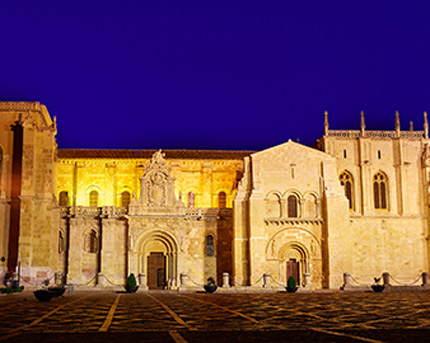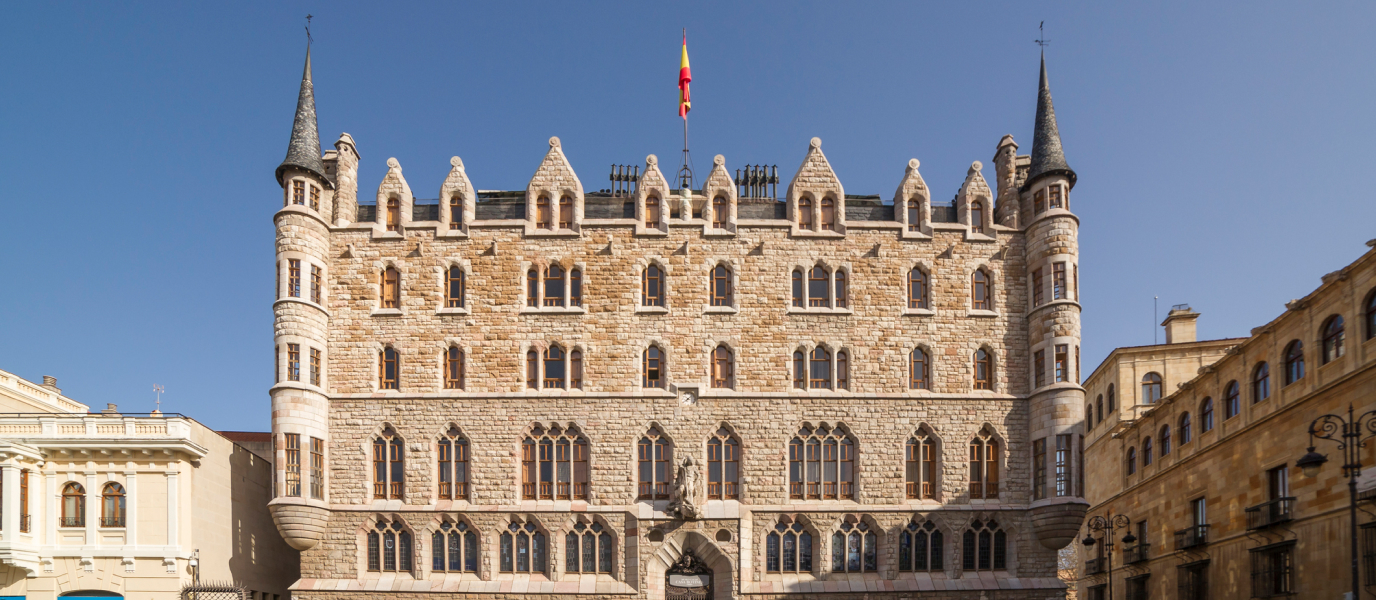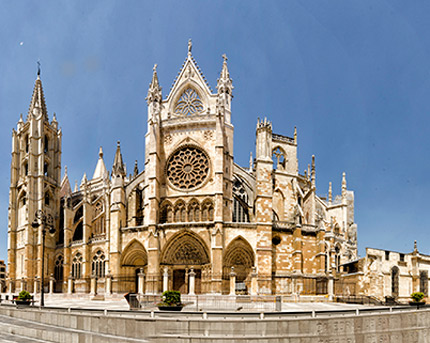The Royal Collegiate Basilica of San Isidro, which dates back more than 1000 years, is one of León’s most recognisable historic monuments. This great Christian temple, which is one of the primary examples of Romanesque architecture in Spain, houses the Royal Pantheon of the Kingdom of León and an important museum.
If you take a walk through the centre of León, you’ll discover a series of jewels which form an essential part of Spain’s historic heritage. San Isidoro is unquestionably one such example. This article will explain more about its history, importance and museum, as well as some basic information about how to visit it.
History of the Collegiate Basilica of San Isidoro
The Collegiate Basilica of San Isidoro can be traced back to the year 965 AD, coinciding with references to a temple that was built in honour of Pelagius: a Christian boy who was martyred in Muslim-controlled Córdoba and later canonised by the Catholic Church. The then-Roman wall was annexed to the temple. The Muslim military leader Almanzor passed through León in 998 AD, completely destroying the city. The church was then rebuilt during the reign of Alfonso V (999-1028). It became known as the ‘old church’ and would be dedicated to Saint John the Baptist.
It wasn’t until the reign of Ferdinand I that the construction of a Romanesque church of better quality would begin, which would serve as a pantheon for the king and his wife, Sancha, who was already living in the old monastery of Saint Pelagius. The new church was consecrated in 1063, the year in which the remains of San Isidoro (Saint Isidore) were taken there.
However, it remained a small temple. The Urraca de Zamora, daughter of the monarchs, ordered for the church to be extended and the pantheon to be decorated. However, this work was not completed until 1149, during the reign of Alfonso VII. Thanks to this mural decoration, the pantheon is referred to as the Sistine Chapel of Romanesque art.
The church underwent further reformations and extensions in the 15th and 16th centuries. It’s worst years, however, didn’t come until the 19th century when it was occupied by French soldiers, who used it as barracks and stables for the Napoleonic troops between 1808 and 1812. Upon their withdrawal, they set fire to the building. The confiscation of Mendizábal (1835) led to further plundering, and it was not until 1851, with the return of a monastic community, and 1894, with the restoration works, that the basilica was finally brought back to life.
The Collegiate Basilica of San Isidoro is now fully restored and rehabilitated, and is one of León’s most iconic monuments. It has a Latin cross floor plan with three distinct naves, where the main altar (which holds the remains of San Isidoro), the polyfoil arches of the transept (with a clear Islamic influence) and the portals of the Lamb and the Forgiveness are particularly notable.

Museum of the Collegiate Basilica of San Isidoro
Besides the basilica, the San Isidoro de León complex also houses a cloister, a museum and the Royal Pantheon. The ‘Cortes de Leon’ (León Courts) of 1188 were held in this very cloister. UNESCO has claimed that these are “the oldest documentary testimony of the European parliamentary system”, granting León the seal of “Memory of the World” as the cradle of parliamentarism. This took place much earlier than the equivalent sitting in the Kingdom of England, to give one example, which first held such a session in 1215.
One of the largest rooms of the collegiate church is the Pantheon of the Kingdom of León: a state which lasted from 910 until 1230, when said kingdom was united with Castile. The Pantheon is the resting place of 11 kings, 12 queens, 10 princes, 9 counts and different noblemen and women of the period. It houses the tombs of Alfonso V, Ferdinand the Great and Queen Sancha (or Doña Urraca), who ordered the construction of the Pantheon.
This “Sistine Chapel of Romanesque art” surprises visitors through a series of finely preserved mural paintings depicting iconic scenes such as the Last Supper, the Crucifixion and the Apocalypse of Saint John.
The museum houses important treasures such as the chalice of Doña Urraca, which is a jewel-encrusted chalice dating back to the year 1100. This unique piece is made from the personal jewels donated by the “infanta” —with gold, onyx, sapphires and emeralds— which was once thought to be the Holy Grail. The museum collection also includes the Ark of Ivories, built in 1059 to hold the remains of Saint John the Baptist and Saint Pelagius; the chest of San Isidoro; and the Banner of Baeza, considered a national treasure.
Useful information for visitors
It is possible to visit the Royal Collegiate Basilica of San Isidoro de León and its museum. The Basilica, which is free to access, can be visited from Monday to Sunday between the hours of 10 a.m. and 9 p.m.
The museum and Royal Pantheon are also open to the public, but a ticket must be purchased to visit them. Guided tours are also available. The museum and Pantheon are open between 10 a.m. and 2 p.m. and 4 p.m. and 7 p.m. on Tuesdays and Saturdays. They are also open between 10 a.m. and 2 p.m. on Sundays and public holidays. They are closed on Mondays.







































































